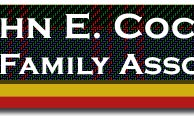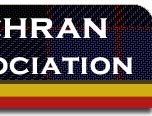MY LIFE STORY
By Inez Bergan
I was born near Colfax, Washington March 1894 and was the fifth
daughter of John E. and Emma Cochran.
We moved to Cottonwood, Idaho in the spring of 1899. I don't
remember much about that trip. See Ethel's account for more details.
I started school in Cottonwood and remember feeling low because I'd
have to miss school because we had the mumps. School was closed
because of a small pox problem. We didn't get small-pox.
The family moved to Whitebird about 1900. We went to school there
for a few years. Father would be on the Doumecq homestead during the
week and come down to Whitebird on Sunday. It was about 12 miles
from Whitebird to Doumecq but the roads were rough and steep. The
round trip took all day.
By 1903 or 1904 the Doumecq was getting pretty well settled so a
school was needed. It started with three or four months in the
summer. Mother taught us at home winters and we usually made our
grade. One year Edna (oldest sister) taught in Whitebird. Four of us
batched with her and went to school. That year Mary (third sister)
had typhoid fever.
For high school we went to the Lewiston Normal. The first three
years were high school and the last two were for a teaching
certificate. I took only the high school.
I was home for two winters when the "new house" was
built. In 1915, with a little pushing, I entered Spokane Deaconess
Hospital for nurse training. It was really my first time on my own.
There had been four of us in Lewiston. We had worked for our board
and room, but we would see each other at school or when it was
necessary.
When nurse training classes were over World War I was in
progress. In October 1918 I went to Camp Lewis as an Army Nurse.
Four of my class went in the service through the Red Cross to serve
for "the duration." Enlisted nurses had to serve three
years. The armistice was signed in November 1919 so my stay was one
year. It was the time of the flu epidemic. I did not get the flu but
many soldiers and citizens died. It was a real experience for one
fresh out of training. Other opportunities soon called.
Miss Saville, a nurse I met at Camp, wanted someone to go with
her to Nome, Alaska as she returned to a little mission hospital.
Not too eagerly, I consented to go if I could have a month's
vacation. I went on vacation late one week. The following Monday I
received a call from her saying "The last boat sails for Nome
Saturday." I thought "I won't go!" When I told Mother
about the call she said "Your father and I will go with you to
Seattle and see you off." I never mentioned my thought. How
could I deprive them of such a needed vacation.
We went to Camp Lewis and got my belongings. From there we went
to Seattle. The S.S. Victoria, the ship to Nome hadn't arrived. The
fleet was in port. President Wilson was also to be in Seattle to
speak. Father stood in line for hours to get in to hear the
President. They did not get to see me off for we didn't sail until
Monday and they had to go home on Sunday.
The usual eight day trip to Nome took us twenty days. September
with its "Ecconomical Storms," as one old timer called the
equinoctial storms gave us a longer and rougher trip.
We dropped anchor several miles off Nome October 3, 1919. There
is no harbor at Nome so the next morning a tug boat came alongside
to take us ashore. One wave would separate the two vessels and the
next would put us too close. At the time the vessels were close
together the passenger was tossed to waiting hands on the tug. It
was an exciting experience.
On shore, Mr. Baldwin, the Mission Superintendent, met us. We
walked up the middle of the snow covered street. I did not know
until the next June that there were sidewalks.
The hospital was a residence remodeled a little for hospital use.
There were two wards of three beds each. One ward was upstairs and
the other downstairs. A single room, a two-bed room and the
operating room were also on the second floor. The first floor had an
office-drug-waiting room, a dining room-kitchen and the usual
"cache" which is the added storeroom. Each house had a
cache and sometimes two or three. Until it froze too hard the water
barrel was out there. Water was delivered to us by buckets at the
rate of sixteen buckets for a dollar. The toilet was also out there.
The "scavenger man" came regularly to empty those. I was
used to primitive life, but this was even more primitive than I
knew.
We had no central heating. Six coal burning stoves heated the
hospital. Another stove heated the nurses cottage in a separate
building. I knew nothing about coal as we had burned wood at home.
To keep warm one soon learned how to keep the fire going.
Another boat did arrive two weeks later. There was something
about insurance after October 15 which was when the ice was supposed
to come in. In November we were frozen in for the winter.
The boat brought our years supply of food, drugs, and coal.
People could not store food in the cache, where it would freeze., so
the kitchen, dining room and office were lined with cases of canned
milk, vegetables, fruit, and whatever. Nome is built on perma-frost.
When cold weather comes the land surface freezes harder and the
center of the house would lift a bit making the wall paper wrinkle
and the doors would not close.
The flu epidemic took most of the adult Eskimo population in
Nome. The following year we had many children who developed
tuberculosis. Our death rate was extremely high and the hospital was
overcrowded. In an eight bed institution we normally had 12 to 16
patients with as many as 4 deaths a week.
A gymnasium owned by the Mission was turned into a children's
home. The Eskimo usually took care of their own, but with the adults
gone many Eskimo children were left to be cared for by others. At
times the number of children needing care was nearly a hundred. Mr.
and Mrs. Baldwin closed their home and moved in to the converted
gymnasium to take care of the children. They had two helpers who
were already at the mission.
My sister, Mary, came in 1920 to help in the hospital. I spent
three years in Nome and came out in the fall of 1922. That Christmas
Father, Mother, and I went to Doumecq. It wasn't any colder than
Nome, and not much warmer. It was certainly different, though. For
one thing, we had a Christmas tree on Doumecq. Nome is treeless.
Before I went forth, or was pushed to another job, our oldest
sister, Edna, died. Her four children came to their grandparents
home. Mother was not well enough to take on the whole load, so I was
home until Mary came out from her work at Nome.
In the spring of 1925 a call came to work in the Pioneer Hospital
in Sitka, Alaska. It was certainly a different part of Alaska and a
different type of work. It was a territorial institution established
as a nursery for old men. Many of these old men were participants of
the gold rush to Alaska and some were pretty funny characters. It
was not challenging work because most of the patients were not
expected to recover. It was a very beautiful part of Alaska. There
were trees, mountains, and much open water. I was there two and one
half years. Mother was ill and Mary was getting married, so I
returned to the family at Hover.
The next four years were growing experiences for all of us.
Mother was sick a lot and when she was down Father was too. I think
the Mccoy children wondered what life was all about. I fear I was
not always a good mother figure. The children were well and survived
and I'm proud of all of them today. They call even remember one or
two good things about me and are wonderful to me.
There was a lot of family activity in 1931. John McCoy graduated
from high school in May 1931. I married Erling Bergan on June 3,
1931, Mother died December 23, 1931. Louise McCoy graduated from
high school in 1932 and the Bergan family went back to Hover for the
event.
Erling was pastor in the Methodist Church in Waitsburg,
Washington for four years. Our daughter, Marcia, was born in
December 1933. She was the first parsonage baby in many years and
the church welcomed her with many gifts. Parsonage life was
different but interesting. We served churches in every part of
Washington and Northern Idaho for thirty-three years until Erling
retired. I think that part of our lives will have to be another
chapter.
Sarah Inez Bergan, March 19, 1894 -– March 18, 1989
Reprinted from Cochran Chronicles. Volume 5, Number 2, October 25, 1982
© JECFA 1982
Up







